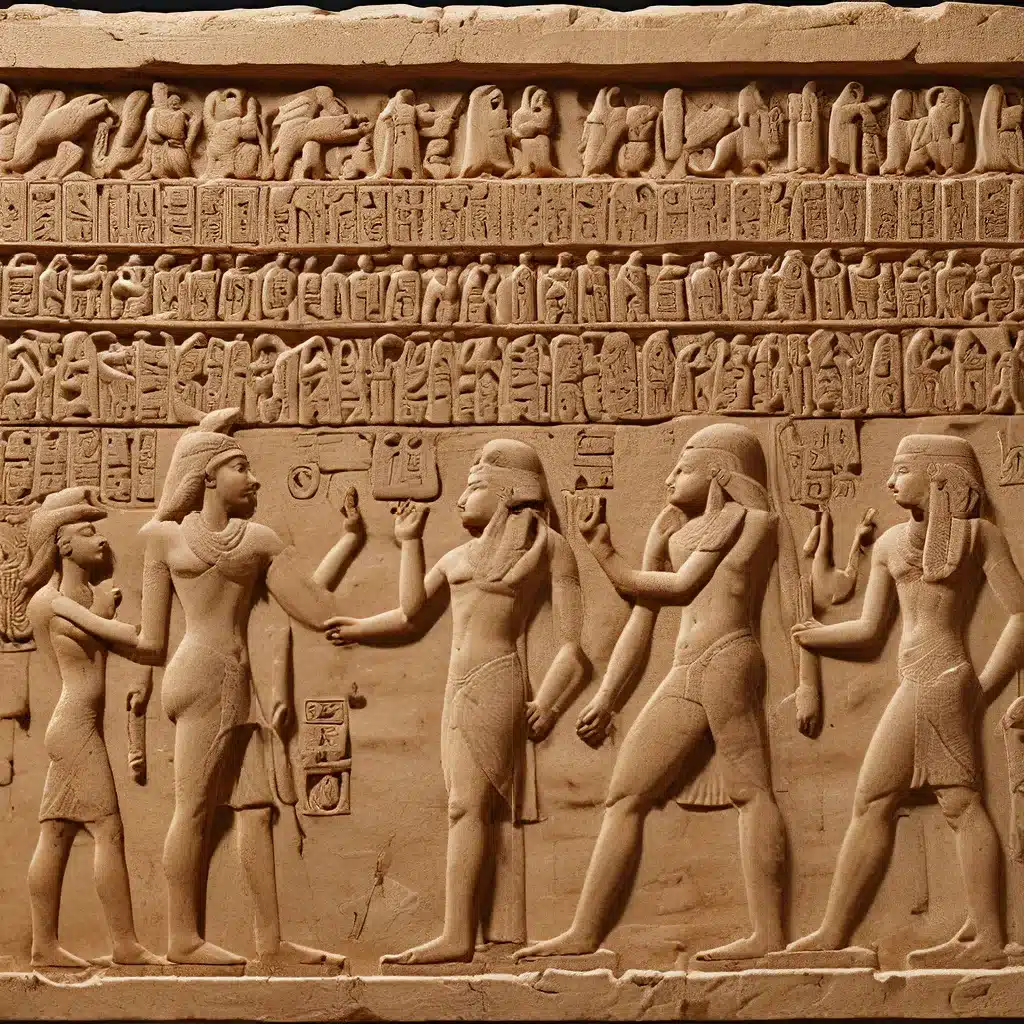
Unraveling the Secrets of the Past: Exploring the Symbolic Language in Ancient Art
The world of ancient civilizations is a veritable treasure trove of enigmatic symbols and captivating imagery, each piece a tantalizing clue to the beliefs, values, and lived experiences of those who came before us. From the hieroglyphic-adorned temples of Egypt to the intricate pottery designs of Mesopotamia, these artifacts serve as a universal language, transcending the boundaries of spoken words and offering a window into the minds of our ancestors.
Art as a Vessel for Cultural Narratives
For ancient cultures, art was not merely a pursuit of aesthetic beauty; it was a powerful tool for conveying intricate ideas, religious beliefs, and social structures. Mythology and folklore were woven seamlessly into the artistic expressions of these civilizations, serving as moral lessons and explanations for the origins of the universe and humanity’s place within it.
Take, for instance, the lotus flower in Egyptian art. This delicate bloom was not just a decorative element; it symbolized purity, rebirth, and the sun god Ra himself. Similarly, the ubiquitous scarab beetle was a symbol of transformation and the afterlife, embedded with profound meaning for the ancient Egyptians. By understanding these symbolic representations, we can unlock a deeper understanding of the artwork, regardless of our own cultural backgrounds.
Deciphering the Symbolic Language
Deciphering the symbolism in ancient art requires a multifaceted approach, drawing upon a wealth of historical and archaeological evidence. Historians and researchers rely on a variety of sources, from religious texts to comparative studies of other cultures, to unravel the intricate web of meanings hidden within these artifacts.
Take, for example, the winged sun disk, a common motif in Mesopotamian art. This symbol is believed to represent a deity or a symbol of divine protection, as evidenced by the archaeological and textual clues that have been painstakingly pieced together over time. By delving into these hidden meanings, we can begin to build a richer understanding of the worldviews and values of these ancient civilizations.
Art as a Reflection of Social Hierarchy and Power Dynamics
The symbolic language of ancient art also sheds light on the complex social hierarchies and power dynamics that shaped these cultures. The size and placement of figures in artwork often reflected the importance of individuals within society, with towering pharaohs in Egyptian art emphasizing their divine status, while more diminutive figures of servants or officials conveyed their place in the hierarchy.
Likewise, the use of specific colors or clothing could denote royalty, religious figures, or social classes, providing a visual representation of the intricate social structures that governed these ancient societies. By deciphering these nuanced visual cues, we can gain a deeper understanding of the power dynamics and power structures that were at play.
Connecting with the Past through Symbolic Language
Understanding the symbolic language of ancient art is not merely an academic exercise; it is a means of bridging the gap between the present and the past, allowing us to connect with the thoughts, beliefs, and experiences of those who lived thousands of years ago. It is a conversation across time, offering a glimpse into the hopes, fears, and aspirations of our ancestors.
As we explore the rich tapestry of ancient civilizations and delve into the hidden meanings of their artistic expressions, we unlock a profound understanding of the human experience. Each symbol, each mythological narrative, and each social hierarchy depicted in these artifacts serves as a testament to the enduring power of human creativity and the innate desire to express the complexities of our existence.
By deciphering the symbolic language of ancient art, we not only uncover the secrets of the past but also gain a deeper appreciation for the shared humanity that transcends the boundaries of time and culture. It is a journey of discovery, one that invites us to see the world through the eyes of our ancestors and to find the common threads that bind us all together.


